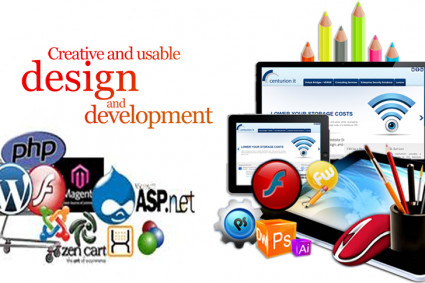
The Internet of Things (IoT) is changing the mode of operation of the industries by interlinking them through smart devices, systems, and people. IoT can be used in manufacturing plants and hospitals, as well as retail stores and logistics business to facilitate organizations to work smarter, faster, and more effectively. IoT allows making better decisions, cost reduction and productivity improvement by aggregating and analyzing real time data.
We will discuss the effectiveness of IoT in improving the operations of various industries and why the internet of things has become a necessity in the modern world.
1. Live Tracking and Data Intelligence.
IoT devices continuously gather data of machines, equipment, and the environments. The real-time information assists businesses in tracking the performance, identify problems and make quick improvements.
In the case of manufacturing, temperature, pressure and machine speed sensors are used to monitor smooth production. In case of abnormal reading, it sends alerts automatically, and the teams can correct errors before they lead to downtime.
This continuous stream of information assists managers to make sound decisions, streamline processes and avoid loss occurrences due to delays or breakdowns.
2. Delivering Reduced Downtime through Predictive Maintenance.
Conventional maintenance usually depends on the periodic checkups or correcting failures after they have been encountered. IoT alters it through predictive maintenance. Through sensor data and analytics, businesses can foresee the probability of a machine breaking down and carry out a maintenance procedure.
This method saves time and money in such sectors as the aviation industry, manufacturing, and logistics. Predictive maintenance minimizes unplanned downtimes, life cycle of equipment, and makes sure that resources are utilized effectively.
3. Supplies/ Inventory Management Improved.
Supply chains entail various moving components- starting with raw materials to delivery of the final product. IoT creates transparency and manages every step in this process.
RFID tags and smart tracking devices will give real-time inventory reports, shipment status and delivery time. In case of any delay or shortage, companies will be able to respond swiftly to prevent delays.
The retailers also enjoy the advantage of inventory system based on IoT technology which works automatically to restock the products as demanded, so that no shelves are empty and no customers are left unsatisfied.
4. Maximum Energy Saving and Economy.
Most industries are concerned about energy efficiency. IoT aids in monitoring and control of the energy consumption in the facilities. Electricity, water, and fuel consumption are monitored by smart meters, sensors, and connected systems and identified areas that consume energy without benefit are detected.
Actually, as an example, the office building with IoT-based energy management systems is adjusted by default to occupancy by controlling the lighting and air conditioning systems. IoT can also be used in factories to optimize equipment use when there is low demand in order to cut power expenses.
These intelligent modifications save money as well as enhance sustainability.
5. Better Risk and Safety Management.
IoT contributes significantly to the safety in the workplace. Sensors attached to each other can be used to identify dangerous situations such as gas leaks, high temperatures or the failure of equipment and give instant warnings to workers.
Wearable IoT devices used in construction and mining monitor worker locations and health requirements and guarantee their safety in potentially hazardous locations. Within the medical field, intelligent sensors identify an emergency and notify the medical personnel.
Such vigilance all the time minimizes accidents, avoids expensive downtime and makes the work environment safer to all.
6. Automation of Operations.
IoT-driven automation enables machines and systems to interact and execute functions without human involvement. This minimizes the human error and accelerates the operations.
As an example, in intelligent factories, robotics facilitated by IoT are involved in monotonous tasks, including assembly and packaging. In farming, the IoT is used to automate irrigation and monitor the soil to give the crops the right amount of water at the right time.
Such automation has a positive effect on productivity and allows employees to concentrate on higher-order tasks which demand creativity and decision-making.
7. Improving Customer Experience.
IoT does not only make the internal operations better, but it also provides a better customer experience. IoT sensors can be used in the retail industry to identify customer behavior and preferences so that stores can customize the shopping experience. Real-time monitoring of shipments in logistics makes customers to remain updated on their orders.
When data produced by IoT devices are integrated with analytics, companies will have a clearer insight into customer needs, anticipate demand, and provide more reliable and faster service.
8. Promoting Data Driven Decision Making.
The IoT produces huge quantities of data in a second. This information provides useful information that can be used in making strategic decisions when correctly analyzed. Businesses are able to detect inefficiencies, predict demand and make future growth projections with confidence.
An example is smart cities, which utilize the data of the IoT to regulate traffic traffic, minimize energy consumption, and enhance services to the population. Likewise, the IoT data is utilized in healthcare organizations to track patient outcomes and enhance care provision.
Real-time IoT-based data-driven decisions result in smarter and more efficient organizations.
Conclusion
Internet of Things has become a force behind the efficiency of operations in almost all sectors. IoT can assist businesses to minimize wastes, eliminate downtime, and improve performance by interconnecting the gadgets, automating procedures, and offering real-time information.
IoT turns the modern operation into a smart and more stable one, making manufacturing lines that correct themselves and logistics systems that allow tracking the shipment automatically. With this technology being continued to be adopted in the industries, the outcome is obvious; increased efficiency, reduced costs, and a future where smart connectivity drives daily development.




